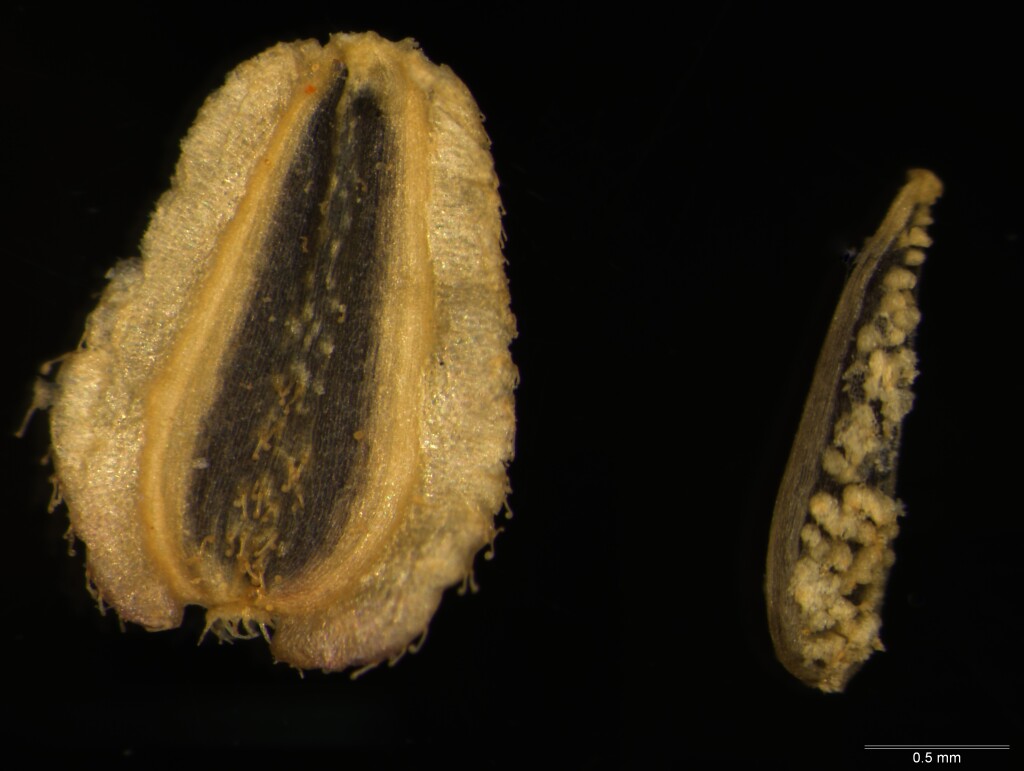Brachyscome ciliaris
(Labill.) Less. Variable DaisyAscending to erect herbs to c. 40 cm high, glabrous or with glandular hairs and/or often cottony eglandular hairs. Leaves cauline, linear to c. ovate in outline, c. 0.5–5 cm long, 1–20 mm wide, glabrous or with glandular and eglandular hairs, lobes mucronate. Bracts 1-seriate, c. equal, mostly herbaceous but with narrow scarious margins and apex; ligules mostly 5–9 mm long but sometimes inconspicuous, white or mauve. Cypselas usually dimorphic (more or less homomorphic only in var. brachyglossa); cypselas of ray florets (excl. var. brachyglossa) laterally compressed, ovate, with broad ribs, lateral faces tuberculate and with apically curled eglandular hairs; cypselas of disc florets obovate, glabrous or hairy, mostly discolorous with the body brown and the vascular ribs and wing-like margins white or yellowish; wing-like margins entire to dissected, flat to somewhat inrolled, edges with apically curled eglandular hairs; pappus 0.05–0.4 mm high.
LoM, MuM, Wim, GleP, VVP, VRiv, MSB, RobP, MuF, GipP, OtP, Gold, CVU, GGr, DunT, NIS, EGU, HSF, VAlp.
Brachyscome ciliaris is a highly polymorphic, polyploid complex of mostly apomictic entities and is found throughout much of central and southern Australia. Taxa referred to B. ciliaris commonly have dimorphic cypselas but some populations have quite or more or less homomorphic cypselas.
The name B. cilliaris var. lanuginosa (Steetz) Benth. has been used for Victorian specimens with an indumentum of white cottony hairs, but this apparently applies more correctly to a Western Australian taxon. In Victoria, var. subintegrifolia with its tufts of white cottony hairs in the leaf axils most closely resembles the former taxon.
Short, P.S. (1999). Brachyscome. In: Walsh, N.G.; Entwisle, T.J., Flora of Victoria Vol. 4, Cornaceae to Asteraceae, pp. 835–859. Inkata Press, Melbourne.
 Spinning
Spinning


